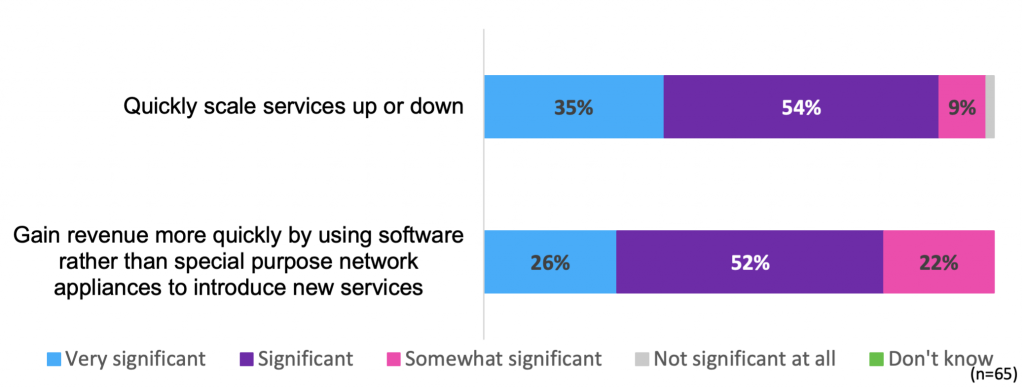Innovating faster and becoming more flexible are key concerns of top executives across the globe. These concerns are even more prominent for broadband operators who need to deploy and simplify their infrastructure faster while preparing the way to develop and deliver new residential and commercial services. In a world that has accelerated its march to digital societies thanks to the ongoing pandemic speeding up innovation cycles throughout all areas of the network has become even more of a necessity.
Technologically this pace change in innovation will be delivered by a shift to cloud-native solutions, and their use to drive greater levels of automation. In Omdia’s 2021 NFV/Edge Adoption Survey 89% of operator respondents highlighted the need to quickly scale services up and down, and 78% of operator respondents highlighted the speed of time to revenue through using software instead of appliances, as significant or very significant drivers in their virtualization and cloud-native strategy.

An example of success in this approach is the converged Singaporean operator M1. After adopting cloud-native solutions and software practices in their back-end systems they managed to reduce the amount of human touch in their order provisioning process by 85%, and expect it to enable them to grow their customers’ self-service transactions from 15-20% to close to 90%.
Now operators are also looking to bring these levels of automation and innovation to their broadband network gateways (BNGs) in the broadband access network. Adopting cloud-native BNG solutions offer several advantages when it comes to accelerating network automation and service innovation:
- Control/user plane separation (CUPS) architecture means operators need only configure a handful of cloud-native control plane BNG nodes to manage potentially hundreds of user planes BNG nodes from central to edge locations
- This makes it easier to roll out changes, but also means that operators can test new configurations with canary upgrades in limited parts of the network with relative ease, and rollback quickly if changes are not beneficial
- To manage cloud-native solutions operators will need to adopt continuous innovation/continuous development (CI/CD) work practices
- This change in delivery will see operators grow more confident in implementing updates across their network and give more frequent windows for operators to deliver new services, and critical security upgrades
- The observability of microservices architecture allows operators to be more granular and selective about the data they collect
- This added data granularity gives service providers the tools to better automate and optimize their networks and to develop the datasets which will generate and support new services
These capabilities will be required of BNG deployments as operators develop their edge and low latency application strategy if they are going to supply the level of quality of experience their customers want.
Gaming is a key opportunity which Asia & Oceania telecoms providers are exploring. In highly competitive online games like Fortnite and League of Legends having m/s more latency than your opponents can be what separates competitors. Therefore the operators which can better optimize their network end-to-end to offer enhanced quality of experience and lower latencies to these segments have the chance to develop new service tiers and revenue streams.
It is not just the services of today and tomorrow that operators could benefit from moving to cloud-native solutions. Because of the faster and more frequent innovation cycles, cloud-native solutions prepare the way for operators to more quickly adopt the standards being drawn up by 3GPP, Broadband Forum, and others for fixed-mobile convergence (FMC). FMC will be foundational in ensuring that converged operators can provide their customers with the same quality of experience no matter the access network technology used.
The Omdia ” Evolution of the BNG in Asia and Oceania” white paper focuses on the changing nature of BNG solutions and what they mean for operator cost models and the ability to develop services to support new revenue streams. Visit Cisco Cloud Native Broadband Gateway site for more information or download the whitepaper here.

CONNECT WITH US